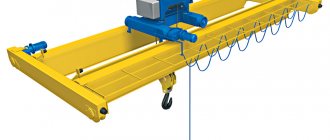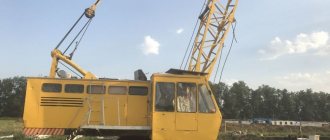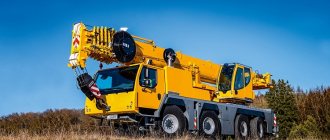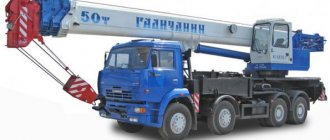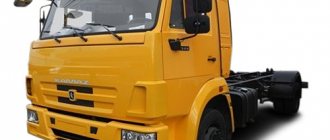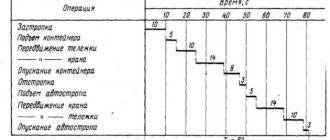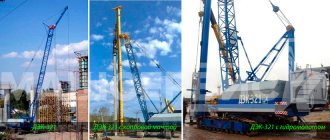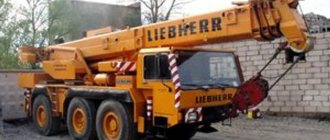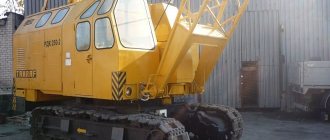To ensure that our engineers can select the most advantageous overhead crane configuration for you, please fill out the short survey form below (or go to the page of the overhead crane you need). Having received the required technical characteristics from you, we will orient you on the cost and delivery time of lifting equipment.
Get a consultation
and find out the cost of a crane with specific technical parameters.
Fill out your contact information in the form below and attach a questionnaire, terms of reference or project.
Or choose your options using the online survey
Selection of an overhead crane according to specified parameters
Time is Up!
Overhead crane design
Any overhead crane consists of one or more spans, end beams and a mechanism that lifts and moves the load along the bridge. Overhead cranes can be classified according to many parameters. One of the main ones is the number of beams in the bridge. A single girder crane has one span, a double girder has two. To perform various specific tasks - mainly in metallurgy - giant mechanisms of complex design are created. The photo shows an overhead crane with four span beams.
Depending on the bridge design, the layout of the load-lifting device changes. A special trolley is installed on a double-girder crane, on which the lifting units are mounted. On a single-girder crane, an electric hoist (telpher) is used instead of a trolley.
Overhead cranes are widely used in various industries for intra-shop and intra-warehouse loading and unloading operations. Depending on their purpose, overhead cranes can be divided into the following main groups:
- General purpose;
- Special purpose (with a rotating trolley, with a retractable rotary and fixed boom, etc.);
- Metallurgical (foundry, magnetic, grab, etc.).
Bridge cranes consist of two main components: a bridge that moves along the workshop, and a crane trolley or hoist that moves along the bridge.
Depending on the bridge design, overhead cranes are divided into single-girder and double-girder. A single girder bridge consists of a main girder connected to two end girders.
A double girder bridge has two main girders connected to two end girders. The most common are double girder overhead cranes.
Based on the method of supporting the crane runway, overhead cranes are divided into support and suspended types. Support-type overhead cranes include cranes that rest with their running wheels on a crane rail mounted on a crane beam mounted on workshop columns and trestles. Overhead overhead cranes with running wheels rest on the lower flanges of I-beams suspended from the ceiling structures of the workshop.
According to the type of drive, overhead cranes are made with manual or electric drives. Cranes with electric drive are most widely used. Cranes with manually driven mechanisms are used for auxiliary lifting and transport operations, for repair and installation of equipment and other work that does not require high speeds for lifting and moving loads.
The main characteristic of overhead cranes is the span - the distance between the axes of the crane rails (GOST 534-78). In most cases, cranes are controlled from the cabin. In some cases, control is carried out from the floor using a remote control panel. At the same time, for operational safety, the speed of movement of the bridge and trolley is significantly reduced. Overhead cranes operating in workshops containing vapors of acids, alkalis and other harmful impurities are controlled remotely.
Overhead overhead cranes. These cranes are made with manual and electric drives, single-girder or double-girder. Single-beam overhead overhead cranes with a manual drive (GOST 7413-80) have a lifting capacity of 0.5-5.0 tons and a length of 3.6-11.4 m. As a mechanism for lifting loads, these cranes use manual mobile worm hoists (GOST 1106 -74).
Single-girder overhead bridge cranes with electric drive (GOST 7890-73) are made of two-, three- and four-legged, have a lifting capacity of 0.25-5.0 tons, the length of two-legged cranes is 3.6-18.0 m, three-legged cranes are 16.2- 27.0 m, four-legged 28.2-34.8 m, load lifting speed 0.133 m/s, electric hoist movement speed 0.33 m/s, crane movement speed 0.53 m/s. The crane is controlled from the floor. Electric hoists are used to lift and move the load. The mechanism of movement of the crane is similar to the mechanism of movement of electric hoists.
The main beam of these cranes is made of an ordinary I-beam or a so-called spaced I-beam, obtained from an ordinary I-beam and having the same mass as the beam, greater strength. The main beam is attached to the end beam either rigidly or rigidly on one side and movably on the other.
The suspended double leg single girder crane is shown in Figure 1
.
The main beam 1
is attached to the left end beam
3
rigidly with bolts, and to the right beam
2
- movably. The main beam is supported by two spherical bearings, which makes it possible to increase or decrease the crane span. Using single girder overhead cranes, you can transport cargo from one span to another without using floor transport. In this case, the main beams of two cranes located in adjacent spans are connected to each other by special transition bridges secured to the main beams with butt locks.
Figure 1. Suspended double leg single girder crane
Support-type bridge cranes are made with manual and machine drive, single-beam and double-beam.
Single-beam support cranes with manual drive GOST 7075-80 have a lifting capacity of 3.2; 5.0 and 8.0 t, span 4.5..16.5 m; double-girder cranes have a lifting capacity of 12.5 and 20 tons and a span of 7.5..16.5 m. Manual mobile worm hoists are used as a mechanism for lifting loads (GOST 1106-74).
Single-beam support cranes with electric drive GOST 22045-82 have a load capacity of 1-5 tons, a load lifting speed of 0.133 m/s, an electric hoist travel speed of 0.33 and 0.53 m/s, a crane travel speed of 0.40; 0.63; 1.0 m/s, lifting heights 6, 12 and 18 m, span 4.5-25.5 m. The main beam of the single-girder crane bridge is made of an I-beam.
The dimensions of the I-beam are selected depending on the load capacity of the crane, taking into account the strength and conditions for the passage of the electric hoist on the I-beam shelves. The spatial layout of the main beam depends on the load capacity and span size.
A general view of a single girder overhead crane is shown in Figure 2
.
1
on one side in the plane of the upper compressed belt of the I-beam, and on the other, a lattice connection
2
along the entire length of the I-beam.
Figure 2. General view of a single girder overhead crane
General purpose double-girder overhead overhead cranes with electric drive (GOST 25711-83) with a lifting capacity of 5-50 tons have a load lifting speed of 0.05-0.32 m/s, a trolley movement speed of 0.32-0.63 m/s, speed crane movement 0.40-2.5 m/s, load lifting height 12.5 m, span 10.5-34.5 m.
These cranes are supported by four running wheels. The same cranes (GOST 6711-81) with a lifting capacity of the main lifting mechanism of 80-500 t and a lifting capacity of the auxiliary lifting mechanism of 20-80 t have a lifting height of the main mechanism of 25 and 32 m, auxiliary 27 and 34 m. They are depending on the lifting capacity and span can be made with eight or sixteen running wheels.
The bridge of a double girder overhead crane consists of two separate spatially rigid beams, called main beams. The main beams are connected to the end beams, forming a horizontal frame with them. The crane running wheels are installed in the end beams of the bridge.
Figure 3. General view of a double girder overhead crane
A general view of a double girder overhead crane with main and auxiliary load lifting mechanisms is shown in Figure 3.
Main beams 7
and end beams
6
constitute the crane bridge.
The crane trolley 3
is equipped with the main and auxiliary mechanisms for lifting the load and the mechanism for moving the trolley.
1
is attached to the crane bridge , which, depending on operating conditions, can be open or closed.
The crane mechanisms are powered by electricity using special busbars (trolleys) 5
installed along the walls of the workshop on the side of the crane bridge, free from the installation of the control cabin.
A lightweight special control cabin 4
is designed for inspection of trolleys.
Electricity is supplied to the mechanisms for lifting loads and moving the trolley using a flexible cable 2
moving on rollers along a tensioned wire
8
.
The main beam of a double-girder overhead crane is most often made of a box section with a symmetrically located rail. It consists of two vertical walls and two horizontal belts (upper and lower). The forces of the running wheels of the cargo trolley act evenly on each vertical wall. Local stability of the walls and spatial rigidity of the section can be ensured by installing diaphragms along the entire length.
To reduce rail deflection and ensure local stability of the walls, intermediate small diaphragms are installed. To pre-select the dimensions of the main beams of a box-shaped structure, it is recommended to take the height of the main beams h = (0.05...0.07) L, the width of the horizontal chords B = (0.02...0.025) L, where L is the crane span.
Cantilever platforms with continuous flooring are attached to the outer vertical sheets of the main beams. The platforms are designed for installation of trolleys or flexible cables on one side of the bridge, and on the other - for installation of the crane movement mechanism and passage of service personnel during inspection and repair of the crane.
CJSC NPO Mekhanik has the ability to supply overhead cranes of any operating mode in a hook or grab design. We carry out a full range of installation and commissioning works. We accept orders for major repairs of cranes of any brand.
If you have any questions, please contact the sales department by phone:
(4842) 75-75-05
Lifting mechanism
Stationary hoists are also often equipped with trolleys of double-girder cranes. This arrangement is called a telpher (or modular) scheme. It is mainly used on cranes with a relatively small lifting capacity - up to 50-60 tons. This is due to the fact that hoists with greater load-carrying capacity are not produced practically anywhere in the world. The exception is China, which produces hoists up to 100 tons, but China's products are not yet in wide demand outside its borders.
Traveling cranes are characterized by high maintainability under certain conditions - unification of equipment at the enterprise and the presence of a certain supply of parts. A lifting mechanism that fails in a critical area of work can easily be replaced with the same mechanism from a nearby crane that is temporarily idle. Also, modular cranes are more compact and lightweight.
For large double-girder overhead cranes, the trolley design is a so-called expanded design. The lifting mechanism consists of the following main parts:
- electric motor;
- gearbox;
- an elastic coupling connecting the engine to the gearbox;
- brakes (mechanical, hydraulic or electromagnetic;
- rope drum.
In the case of a modular layout, all components are “packed” into the hoist body, while in an expanded layout, they are all located separately from each other in the open air. This makes it somewhat difficult to purchase spare parts in the event of a breakdown. The electric motor is produced by one company, the gearbox by another, etc. If the crane starts to break down during the post-warranty period, you will have to enter into contracts with a dozen different suppliers. But the design of an overhead crane with a deployed trolley makes it possible to create mechanisms with a very large lifting capacity - 200-300 tons or more.
Movement mechanism
The support cranes move using wheels mounted inside the end beams. Suspended crane beams use special trolleys attached to the top of the end beams and moving along the lower flange of the crane track (I-beam).
Currently, two main types of overhead crane travel drives are used. Support cranes are moved using geared motors, while overhead cranes are moved using electric motors. A geared motor consists of a motor and a gearbox that converts the torque of the motor and transmits it through the shaft to the wheel. On overhead cranes, the torque is transmitted from the motor directly to the wheels of the travel trolley via gears. This gear is one of the most vulnerable points of the design, since its small size carries a significant load.
Not all wheels and trolleys are equipped with engines. Often the crane has two drive trolleys and two “idlers”. The number of travel motors required on a particular crane is calculated based on the lifting capacity, span length, operating mode, etc.
How much can a crane lift?
The main technical characteristic of an overhead crane is the weight of the load it can lift. The world's largest crane operates in China, its lifting capacity is 20 thousand tons. He can lift this weight at a speed of 10 meters per hour. The crane is used to assemble oil production platforms. The crane is used to assemble oil production platforms. But this is unique equipment.
The most common overhead cranes have a lifting capacity of 1 to 50 tons. This is enough to perform the vast majority of industrial work. However, to perform various specific tasks, cranes with a lifting capacity of 150, 300, or even 500 tons are manufactured. Most often they are used for installation and maintenance of turbines of hydroelectric power plants, as well as nuclear reactors. In the latter case, the cranes are made not only of impressive lifting capacity, but also of circular action - the so-called polar ones. Such a lifting unit moves along radial rails installed inside the power unit housing, thanks to the special design of the end beams.
Lifting capacity records belong exclusively to the supporting structure of overhead cranes, which is capable of withstanding colossal loads. Suspended crane beams rarely have a lifting capacity of more than 20 tons due to the fact that most global manufacturers do not produce mobile hoists with a higher lifting capacity. In addition, in order for the tracks to withstand the weight of an overhead crane with such a load, they will have to be built excessively powerful - it is easier and cheaper to install a support crane.
Sale of overhead cranes at Rosttekhmash
Our company carries out a full range of works on the production of overhead cranes of various designs. The professionalism of our specialists and the capacity of the enterprise give us the opportunity to produce support and suspended cranes with manual and electric drives in the shortest possible time. Our faucets are certified and comply with GOST requirements.
We not only produce and sell overhead cranes, but also provide a number of related services. If necessary, our specialists will install, dismantle, repair, modernize and maintain cranes and equipment. We offer a full range of industrial overhead crane production and maintenance services in one place. This will significantly reduce costs and achieve the most efficient and long-term operation of lifting equipment.
The quality of our cranes is confirmed by certificates and passports that accompany the equipment upon delivery. The service life, subject to high-quality installation, timely technical inspections, maintenance and scheduled repairs, is 20 years
.
We provide all overhead cranes manufactured by us with a warranty period of 1 year
.
We supply and install ready-made cranes throughout Russia using our own transport or any transport company that can provide delivery to your region. When performing installation work, our specialists carry out all necessary activities, including commissioning (static and dynamic tests), which are confirmed by the necessary as-built documents.
Load-handling organs
In accordance with the nature of the cargo being moved, cranes are equipped with various load-handling devices. Depending on their design, overhead cranes are divided into the following main types:
- Hook. This is the main, most common and universal type of tap. It is equipped with a lifting hook, usually with an automatic latch. Can lift any load, but not directly with a hook, but with the help of slings.
- Grab - designed for loading and unloading various bulk materials, as well as scrap metal. Grabs come in two types - in the form of a double bucket for unloading crushed stone, sand, etc. and in the form of a “claw” - for scrap metal or, for example, lumber.
- Magnetic. An electromagnet is installed as a load-handling device, controlled from the crane operator’s cabin or from a remote control. Used for transporting metal sheets.
- Foundry - equipped with special hooks for gripping containers with molten metal.
- Stacker cranes. Equipped with forks for grabbing pallets with goods. Used in warehouses.
Also, on many overhead cranes there are various combinations of load-handling elements - for example, magnetic grab cranes. Foundries often install auxiliary lifting mechanisms with conventional hooks.
Suspension and support cranes
Another parameter by which overhead cranes differ is their location on the crane tracks. The support crane moves along the rails like a locomotive, the overhead crane is located under the tracks and rests on the lower flange of the I-section that serves as the crane tracks.
As a rule, single-beam cranes (or beam cranes) are suspended. An overhead double girder crane is an extremely rare occurrence. Its advantage is that, due to the specific design, the load can, moving along the bridge, extend to the sides beyond the crane runways. For this purpose, the bridge design includes consoles - parts of the span beams that extend beyond the crane tracks. This function is useful when working in a room with a shortage of free space, when it is necessary to somehow “push” the load.
Technical characteristics of double girder overhead crane
| lifting capacity | up to 32 tons; |
| bridge span | up to 28.5 m; |
| lifting height | up to 36 m; |
| operating mode | up to A5 (5K); |
| crane speed | 30 m/min (frequency regulation possible); |
| speed of movement and lifting of the hoist | set by the manufacturer (standard: lifting 8 m/min, moving 30 m/min); |
| control | from the floor (or duplicate radio control) or from the cab; |
| crane options | general industrial, fireproof, chemically protected design for work in hot-dip galvanizing shops. |
State standards
Depending on the type of overhead cranes, there are several regulatory documents governing their manufacture:
- GOST 27584-88 - contains general technical requirements for the production of overhead and gantry cranes, their acceptance, storage, transportation, operating modes, etc.
- GOST for single-beam electric overhead cranes No. 22045-89.
- GOST 25711-83 “General purpose electric overhead cranes with lifting capacity from 5 to 50 tons.”
- GOST for single-beam suspended bridge cranes No. 7890-93.
In addition to these basic standards, each crane must meet the requirements of many other GOSTs - for painting, quality of welded joints, metal hardness, etc.
Prices
| Electric bridge cranes, double-girder support controls from the floor (with electric hoist made in Bulgaria, lifting height up to 9 m, version 3K, U3, -20+40 C, operating mode A3) | ||||||||
| G/P | Crane span | |||||||
| 4.5 m | 7.5 m | 10.5 m | 13.5 m | 16.5 m | 18 m | 19.5 m | 22.5 m | |
| 3.2 tons | 750 000 | 900 000 | 950 000 | 1 250 000 | 1 350 000 | 1 550 000 | 1 750 000 | 1 950 000 |
| 5 tons | 850 000 | 1 000 000 | 1 050 000 | 1 350 000 | 1 450 000 | 1 650 000 | 1 850 000 | 2 050 000 |
| 10 tons | 1 200 000 | 1 350 000 | 1 500 000 | 1 700 000 | 1 800 000 | 1 900 000 | 2 100 000 | 2 300 000 |
| 12.5 tons | 1 400 000 | 1 500 000 | 1 700 000 | 1 800 000 | 1 950 000 | 2 050 000 | 2 150 000 | 2 700 000 |
| 16 tons | 1 500 000 | 1 600 000 | 1 700 000 | 1 950 000 | 2 200 000 | 2 500 000 | 2 800 000 | 2 900 000 |
| 20 tons | 1 600 000 | 1 950 000 | 2 100 000 | 2 400 000 | 2 600 000 | 2 800 000 | 2 900 000 | 3 000 000 |
| 25 tons | 2 400 000 | 2 800 000 | 3 100 000 | 3 300 000 | 3 700 000 | 3 800 000 | 3 900 000 | 4 100 000 |
| 32 tons | 2 500 000 | 2 900 000 | 3 300 000 | 3 500 000 | 3 900 000 | 4 000 000 | 4 100 000 | 4 300 000 |
| Double-beam electric overhead cranes are controlled from the cabin (with electric hoist made in Bulgaria, lifting height up to 9 m, version 3K, U3, -20+40 C, operating mode A3) | ||||||||
| G/P | Crane span | |||||||
| 4.5 m | 7.5 m | 10.5 m | 13.5 m | 16.5 m | 18 m | 19.5 m | 22.5 m | |
| 3.2 tons | 1 450 000 | 1 600 000 | 1 650 000 | 1 950 000 | 2 050 000 | 2 250 000 | 2 450 000 | 2 650 000 |
| 5 tons | 1 550 000 | 1 700 000 | 1 750 000 | 2 050 000 | 2 150 000 | 2 350 000 | 2 550 000 | 2 750 000 |
| 10 tons | 1 900 000 | 2 050 000 | 2 200 000 | 2 400 000 | 2 500 000 | 2 600 000 | 2 800 000 | 3 000 000 |
| 12.5 tons | 2 100 000 | 2 200 000 | 2 400 000 | 2 500 000 | 2 650 000 | 2 750 000 | 2 850 000 | 3 400 000 |
| 16 tons | 2 200 000 | 2 300 000 | 2 400 000 | 2 650 000 | 2 900 000 | 3 200 000 | 3 500 000 | 3 600 000 |
| 20 tons | 2 300 000 | 2 650 000 | 2 800 000 | 3 100 000 | 3 300 000 | 3 500 000 | 3 600 000 | 3 700 000 |
| 25 tons | 3 100 000 | 3 500 000 | 3 800 000 | 4 000 000 | 4 400 000 | 4 500 000 | 4 600 000 | 4 800 000 |
| 32 tons | 3 200 000 | 3 600 000 | 4 000 000 | 4 200 000 | 4 600 000 | 4 700 000 | 4 800 000 | 5 000 000 |
| Additionally for taps: | ||||||||
| Gallery | 30 000 | 40 000 | 50 000 | 60 000 | 70 000 | 80 000 | 90 000 | 100 000 |
Operating mode
The design of an overhead crane is highly dependent on the intensity of its future use. According to GOST 27584-88, operating modes of cranes are designated from 1K to 7K. Depending on this, the technical characteristics of the overhead crane are calculated, as well as the power of the metal structure (span and end beams).
Modes 1K-3K, as a rule, correspond to cranes intended for minor and rare work, mainly for lifting any workshop equipment for the purpose of its repair and maintenance. Operation of overhead cranes with one span girder, according to GOSTs, must be carried out in a mode no heavier than 3K.
The average operating mode of 4K-5K is used by most cranes involved in technological processes of main production at a wide variety of industrial enterprises.
Heavy-duty (6K) and very heavy-duty (7K) cranes are most often found in metallurgical plants. These are real monsters among lifting mechanisms; they “plow” continuously for days on end, in a polluted atmosphere and at elevated temperatures. The photo shows an overhead crane at a foundry in operation.
Crane control
There are three ways in which you can operate an overhead crane:
- Cabin. A special structure, usually attached to the crane bridge, in which the controls are concentrated. It can be open or closed (glazed). The operator, sitting in a chair inside the cabin, views the work area from above and controls the crane, following the instructions of the slinger.
- Radio control - this method appeared relatively recently, but is rapidly gaining popularity. Some systems allow you to control the crane from a distance of up to 100 m. This dramatically improves operator safety and mobility.
- Cable remote control. The simplest and cheapest control. Mainly implemented on single girder cranes.
Often two control methods are combined in case one of them fails.
Buy industrial overhead cranes at
Order overhead cranes of any modification and configuration. And in the shortest possible time we will manufacture, deliver and install the crane in any region of the Russian Federation.
Check out our products on the catalog pages, fill out the questionnaire
to place an order.
If you find it difficult to choose, contact us in any convenient way ( "Contacts"
). Our company’s specialists will answer all your questions and help you choose an industrial overhead crane of the required configuration.
Overhead crane paths
To move the support cranes, railway rails of the “P” type or special crane rails of the “KR” type are used. The latter have a wider base, due to which the load from the crane is more evenly distributed over the support. Sometimes square steel bars are used as tracks. The rails are installed on trusses attached to the walls of the building.
Suspended cranes move along I-beams, resting on the lower flange. The beams are attached to the ceilings of the building or on special overpasses.
Main design elements
- A bridge is a metal structure on which a crane trolley with a load-handling device moves. It consists of two longitudinal main beams, which are connected at the edges by two transverse end beams. There are structures made from a solid box-section profile and lattice (diagonal) structures. Metal elements are connected to each other by welding, rivets or bolts. The running wheels of the bridge are driven by an electric motor.
- To move the bridge metal structure along the entire premises, crane tracks are installed. They are constructed from ordinary railway or special crane rails, as well as from rectangular steel tires. Crane tracks are mounted on pre-laid reinforced concrete foundations.
- Loads are moved along the bridge using a crane trolley. It is a welded frame on which the drive and driven wheels are mounted, driven by an electric motor installed on it. For safe operation, the design is equipped with a braking system and two limit switches.
- The lifting mechanism (chain or rope hoist or hoist) is mounted on a crane trolley. A hook, grab, magnet, etc. can be used as lifting devices.
- The control cabin is located below the bridge level, closer to the edge opposite to the one to which the power supply (trolley wires) is supplied.
Single and double girder overhead cranes
According to the type of construction, overhead cranes are produced as single-girder and double-girder.
- A double-girder overhead crane is more stable than a single-girder structure. The bridge over which the cargo trolley moves is a structure of two parallel running beams, which rest on the end beams. Double-girder overhead cranes are also considered more productive in terms of lifting capacity and load lifting speed.
- A single-beam overhead crane, which also has another, more common name, “beam crane,” has at the basis of the bridge design only one span beam of an I-section, which rests on perpendicularly located end channels. The advantages of this type of crane include the lower cost of the structure, its lightness, ease of installation and maintenance, compared to a double-girder overhead crane. However, their lifting capacity is inferior to more reliable and stable double-girder cranes.
Support and overhead overhead cranes
Based on the way the span structure is fixed and moves along the bridge track, a distinction is made between supporting and suspended bridge cranes.
- In support cranes, the crane rail tracks are supported by reinforced concrete or metal columns, and the bridge moves along the top of the crane track, supported by the crane rail. Such structures are installed in large production or warehouse premises.
Overhead overhead cranes move along the bottom flange of an I-beam, which is suspended from the ceiling of the room. This type of structure can be installed even in small rooms, but the structure of the roof or floors of the building must be designed for the weight of the crane, cargo and snow loads.
- 1 ton overhead crane
- 2 ton overhead crane
- 3.2 ton overhead crane
- 5 ton overhead crane
- 6.3 ton overhead crane
- 10 ton overhead crane
- Overhead crane 12.5 tons
- Overhead crane 16 tons
- Overhead crane 16/3.2 tons
- Overhead crane 20 tons
- Overhead crane 20/5 tons
- Overhead crane 32 tons
Send a request
